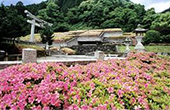Following the discovery in 1690 of an exposed copper vein at Besshiyama, a village at an altitude exceeding 1,000 meters, Sumitomo confirmed the existence of an excellent deposit and started mining in the following year. Sumitomo recruited workers from around Japan to labor in the mines and transport the ore, quickly establishing the necessary infrastructure for mining. According to the records, by 1695, just five years after the discovery of the deposit, there was already a bustling town of 2,700 people, mostly mineworkers, complete with shops and other businesses. Thus, amid this mountainous landscape, the Besshi Copper Mines were born.
The Besshi Copper Mines remained one of the leading sources of copper in Japan and the world for nearly 200 years, throughout the Edo period.

 EN
EN








